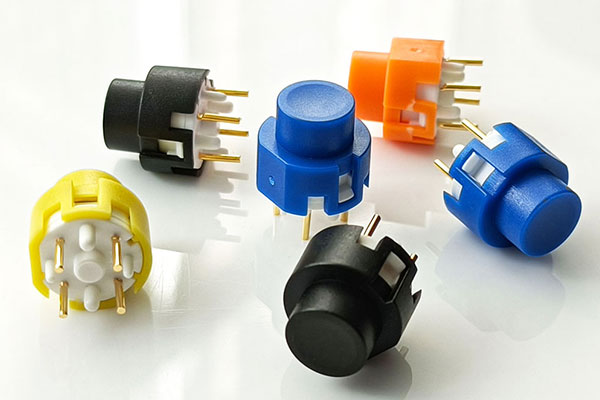Knowledge
What is the common tact button used for module synthesizers?
In modular synthesizers, tact buttons are essential components used for a variety of functions such as triggering sounds, resetting sequences, or enabling specific modes. The common tact button used in these applications is typically a momentary push button, known for its reliability and tactile feedback. Here’s an overview of the key characteristics and considerations for these tact buttons:

Common Features:
1. Size:6mm x 6mm: This is one of the most common sizes used in modular synthesizers due to its compact footprint, making it suitable for densely packed modules.
2. Type:Momentary (Normally Open): These buttons close the circuit only while being pressed, which is ideal for triggering events or inputs momentarily.
3. Actuation Force:Typically around 160gf to 250gf, providing a noticeable but not too stiff tactile feedback, ensuring reliable actuation without accidental presses.
4. Mounting Type:Through-Hole or Surface-Mount Technology (SMD): Through-hole is common for DIY and easily repairable designs, while SMD is used for more compact and automated assembly processes.
5. Durability:Rated for tens of thousands to millions of cycles, depending on the quality and manufacturer, ensuring long-term reliability in performance environments.
Specific Considerations for Modular Synthesizers:
1. Tactile Feedback: Strong, clear feedback is crucial for precision in live performances and studio settings, allowing the musician to be confident that a button press has been registered.
2. Size and Form Factor: Buttons must be small enough to fit within the often limited space of a module while being large enough to be easily pressed, even in the heat of a live performance.
3. Aesthetic and Ergonomics: Often, modular synthesizers feature buttons with caps of various colors for quick visual identification, enhancing usability. The button’s height and feel should match the overall design ethos of the synthesizer for a cohesive look and user experience.
Integration:
In a modular synthesizer, these tact buttons might be used in several scenarios:
1. Triggering Samples or Effects: Momentarily connecting circuits to trigger sounds or effects.
2. Navigation and Control: Used in combination with LEDs to navigate menus or select different modes in digital modules.
3. Reset or Sync Functions: Providing a quick and reliable way to reset sequences or synchronize various components of the synthesizer.
The momentary tact button is a staple in modular synthesizer design due to its balance of size, reliability, and tactile feedback. Its ubiquitous presence in both commercial and DIY synth modules highlights its importance in providing musicians with the tactile interface necessary for creating and manipulating sound efficiently
RELATED NEWS
- Types of Anti-Vandal Switches 2025-02-28
- Where Are Anti-Vandal Switches Used 2025-02-27
- The tact switch with integrated LED for illumination vision 2025-02-27
- Introduction to LED Tact Switches 2025-02-18
- An Article For Emergency Stop Push Button 2025-02-11
CATEGORIES
LATEST NEWS
CONTACT US
Contact: Bella
Phone: 15999819066
E-mail: rucoe@rucoe.com
Whatsapp:+86-15999819066
Add: Taoyuan Street, Nanshan, Shenzhen
